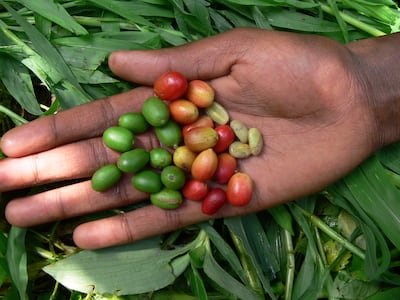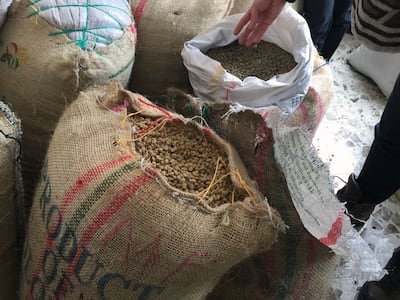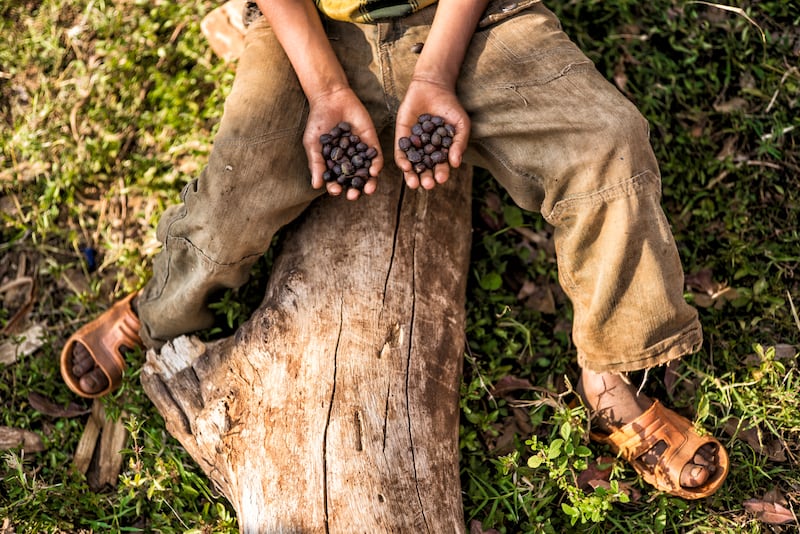Researchers have mapped the family history of the world's most popular coffee – Arabica – which could help protect it from climate change in the future.
It has confirmed the belief that Arabica was first cultivated in Yemen and the modern varieties originated from there.
Dating its origin back almost one million years, the mapping shows how the crop managed to survive the world's hot and cold climate changes over the millennia, allowing researchers to pinpoint the locations where it has been able to consistently thrive.
The crop is at risk of being decimated by pathogens, such as coffee leaf rust, in the future, due to its low genetic diversity. Presently coffee leaf rust causes $1 billion to $2 billion in losses annually.
By mapping the family tree, the findings by the University of Buffalo, published in Nature Genetics, reveal how one line of Arabica varieties obtained strong resistance to the disease.
The Timor variety, also known as Robusta, formed in South-East Asia as a spontaneous hybrid between Arabica and one of its parents, Coffea canephora, and is more resistant.
Using the new Arabica reference genome has allowed researchers to pinpoint a novel region harbouring members of the RPP8 resistance gene family as well as a general regulator of resistance genes, CPR1, which will help secure the crop's future.
“We’ve used genomic information in plants alive today to go back in time and paint the most accurate picture possible of Arabica’s long history, as well as determine how modern cultivated varieties are related to each other,” said the study's co-author, Prof Victor Albert of the University of Buffalo's department of biology.
“A detailed understanding of the origins and breeding history of contemporary varieties are crucial to developing new Arabica cultivars better adapted to climate change.”

Using cutting-edge DNA sequencing technology and advanced data science, the team was able to sequence 39 Arabica varieties.
Arabica formed as a natural hybridisation between Coffea canephora and Coffea eugenioides.
Scientists have struggled to pinpoint exactly when – and where – this event took place, with estimates ranging everywhere from 10,000 to one million years ago.
To find evidence for the original event, the researchers ran their various Arabica genomes through a computational modelling program to look for signatures of the species’ foundation.
The models show three population bottlenecks during Arabica’s history, with the oldest happening some 29,000 generations – 610,000 years – ago. This suggests Arabica formed sometime before that, anywhere from 610,000 years to one million years ago, researchers say.
“In other words, the crossbreeding that created Arabica wasn't something that humans did,” Mr Albert said.
“It’s pretty clear that this event predated modern humans and the cultivation of coffee.”
Coffee plants have long been thought to have developed in Ethiopia, but varieties that the team collected around the Great Rift Valley, which stretches from South-East Africa to Asia, showed a clear geographic split, the researchers said.
The wild varieties studied all originated from the western side, while the cultivated varieties all originated from the eastern side closest to Bab Al Mandeb, which separates Africa and Yemen.
“It looks like Yemeni coffee diversity may be the founder of all of the current major varieties," said the study’s co-leader, Patrick Descombes, senior expert in genomics at Nestle Research.
"Coffee is not a crop that has been heavily crossbred, such as maize or wheat, to create new varieties."

The modelling by the researchers showed how climate events in East Africa affected the crop.
From having a low population size between 20,000 to 100,000 years ago, which roughly coincides with an extended drought and cooler climate believed to have hit the region between 40,000 to 70,000 years ago, its population increased during the African humid period, around 6,000 to 15,000 years ago, when growth conditions were probably more beneficial.
Arabica coffee, prized for its smooth and relatively sweet flavour, now makes up 60 per cent to 70 per cent of the global coffee market and is brewed by companies including Starbucks, Tim Horton's and Dunkin' Donuts. The rest is robusta, a stronger and more bitter coffee made from one of arabica's parents, Coffea canephora.







